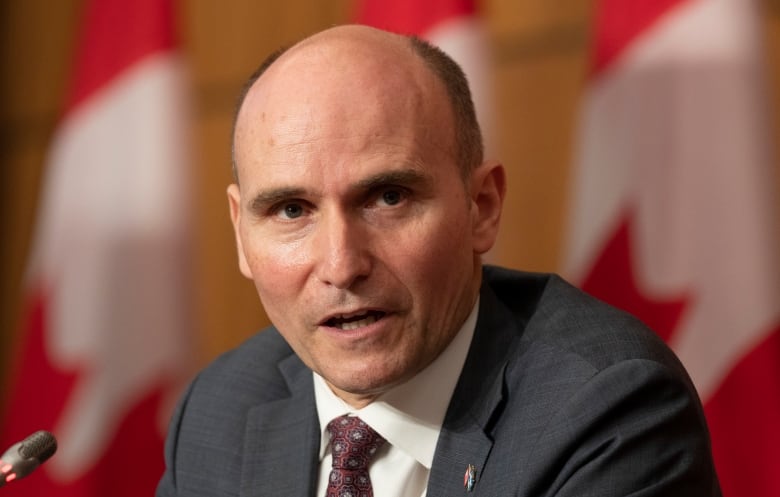Confusion abounds as Ottawa introduces new pandemic travel measures with few details
Canada's airports 'have no new information on how or when the new testing requirements will be implemented'

A hastily assembled plan to test all non-American international travellers to Canada for COVID-19 has prompted confusion among passengers and airport operators alike because the federal government has released few details about how the new rules will be implemented.
With the omicron variant in circulation, the federal government announced Tuesday it would make all incoming passengers from non-U.S. foreign destinations get another COVID-19 test when they arrive in Canada. This new test is in addition to the pre-departure moleculartest that all travellers must undergo before leaving for Canada.
Health Minister Jean-Yves Duclos said Wednesday the new arrival testing program will take effect immediately. "That is starting today," the minister told reporters. But there areno signs today that the program is actually up and running.
Where? When? Airports want to know
"One concern is just when this goes into effect ... something even Air Canada and WestJet appear not to know," Cameron Turner, a traveller from Victoria, B.C., asked CBC News. "Another concern is just where travellers are expected to self isolate while waiting for their test results."
The federal government's COVID-19 travel website still relays information about the old arrival testing requirements. Under that outgoing program, fully vaccinated travellers were exempt from arrival testing but some were randomly selected fortake-home tests.
Those travellers self-administered the test while on a video link with a nurse from a private company, such asDynacare, LifeLabsor Switch Health, to make sure it was done right. The specimen was then sent via courier to a laboratory.
That randomized program is being replaced with mandatory arrival testing for all passengers, regardless of vaccination status. Federal health officials have not said who will administer the arrival tests or whether the tests will be administered on-site or through take-home kits.

Duclos has said only that some passengers may have to wait for up to three days in self-isolation before they get their results. Where those passengers will wait is still unclear.
"Once they enter through a Canadian airport, they need to be tested on arrival, either directly at the airport or, if that is not possible, they take a home test and do that home test at home. While they wait for the result of that test to be known, they isolate themselves. And when they get a negative test, they can exit out of their isolation period," Duclos told reporters Wednesday.
CBC News has asked Health Canada to clarify when the arrival testing program willstartand what form it will take when it'soperational.
Asked Thursday if airports are ready to hand out tests or arrange for on-site testing, the president of the Canadian Airports Council, the organization that represents many of the country's airports, said he's still not sure how the program will work.
"Unfortunately, we have no new information on how or when the new testing requirements will be implemented," Daniel-Robert Gooch told CBC News.
Gooch said it's simply not feasible to test all incoming passengers in the arrival halls of the country's largest airports.
"The use of off-site tests, such as take-home tests, will be essential to making it work. Our members have told us it would not be possible to process 100 per cent of all non-U.S. international travellers on-site," he said.
Safety concerns
Gooch said Canada's airports are questioning just how safe it is to cram thousands of passengers into a confined area of an airport not purpose-built for health procedures. He said their preference is for travellers to take these tests "in the safety and comfort of their own home or other destination."
Tori Gass, a spokesperson for Toronto's Pearson International Airport, said in an email that "a combination of onsite and off-airport testing must be considered to accommodate the volume of tests contemplated."
Speaking in question period, NDP Leader Jagmeet Singh said the ongoing confusion over when this new program comes into effect is unacceptable.
"Canadians understand that it's important to take precautionsfor travel with appropriatesafety measures but these safety measures and precautions have to be clear and consistent. And that's the ongoing critique of this government. Canadians don't know what the rules are and when they'll apply," Singh said.
Deputy Prime Minister Chrystia Freelandduckedthe question.
"I would really like to thank Canada's public health authorities for responding with such swift action and I want to say to all Canadians this is a circuit breaker to give us time to be careful," she said.













_(720p).jpg)


 OFFICIAL HD MUSIC VIDEO.jpg)
.jpg)



























































































